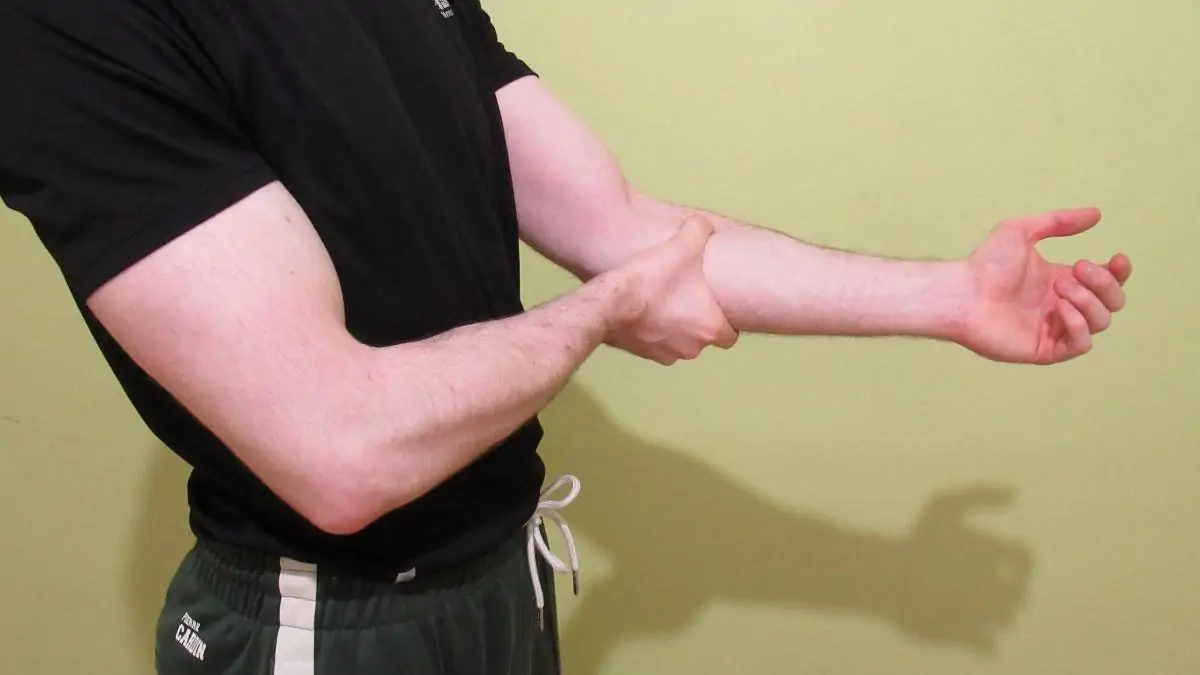When your joints, tendons, or ligaments become sprained, forearm splints, often referred to as “forearm shin splints,” are the painful result. I got my first sour taste of forearm splints after going too heavy on curls. It felt like there was a pain deep inside my forearm, perhaps in the bone.
Well, this deep tenderness, as you’ll soon learn, is one of the most common symptoms of this increasingly common injury.
Related posts: forearm cramps │strained forearm│weightlifting and forearm pain
Forearm splint symptoms
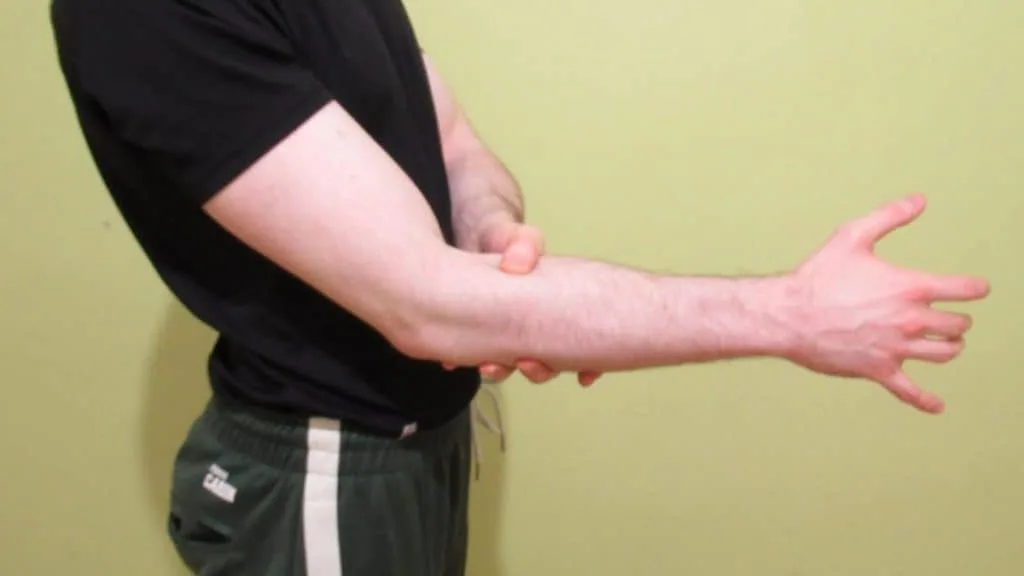
Pain is the first and most obvious of the forearm splint symptoms. People often complain about feeling a throbbing sensation deep in their arm as if it was originating from the bone. This symptom is common among bodybuilders because they can often get forearm splints from curls by putting too much tension on their forearm flexors.
You may also experience tenderness on the surface of your forearm that becomes worse when more pressure is put on the pain point. In this case, you definitely want to ice the affected area to keep the swelling, which often accompanies the tenderness, under control.
Of course, these symptoms aren’t exhaustive. Depending on the severity of your injury, you may also experience many other forearm splints symptoms, which can include a loss of strength, burning on the forearm, lumps on the affected area, stiffness, and numbness.
Forearm splint diagnosis
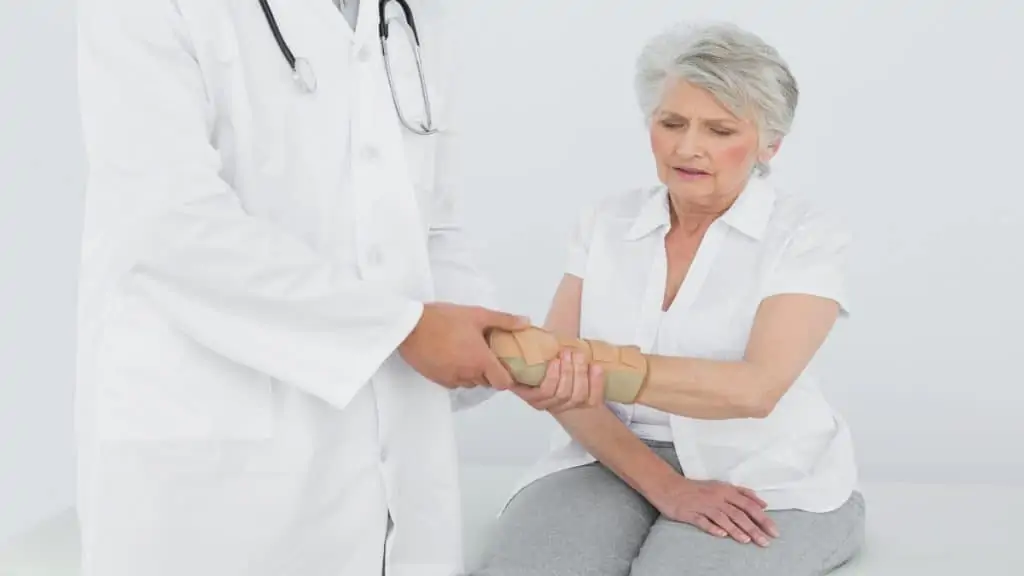
Before we get onto the topic of how to get rid of forearm splints, let’s talk about the diagnosis.
First and foremost, your doctor will likely ask about your symptoms (such as the severity and when they started) before performing some tests to determine the source of the pain.
It’s likely that they’ll also refer you for an X-ray or ultrasound scan so that they can take a closer look at the affected area and try to determine the root cause. From there, they can prescribe an effective forearm splint treatment.
Commonly, these treatments involve Rest, Ice, Compression, Elevation (RICE), as well as various physical therapy exercises once the pain has died down. However, in the initial stages, your doctor may also prescribe non-steroidal anti-inflammatory drugs (NSAIDs), which help to keep the pain under control by reducing inflammation of the affected area.
What causes Forearm splints?
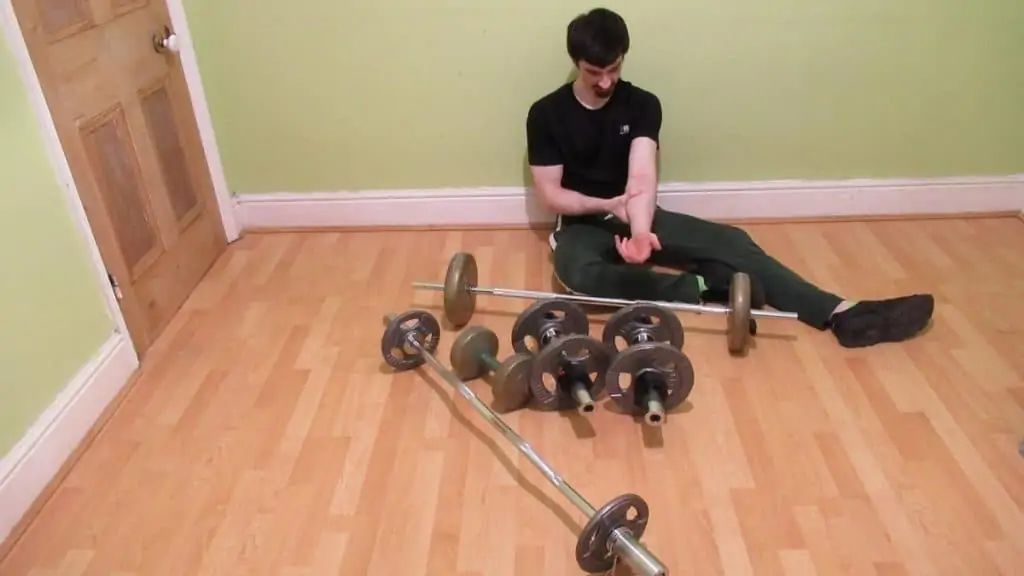
Stress fractures are the classic forearm splint cause. And weight lifting is a classic cause of stress fractures. Essentially, stress fractures (and thereby forearm splints) occur when you perform repetitive, heavy movements for a prolonged period of time.
Bicep curls are a prime example of this type of movement. During curls, you’re continually subjecting your forearms to tension, which is exacerbated by the fact that many trainees lift weights with poor technique. So, if your forearm hurts when curling, read on.
However, also note that forearm splints can occur outside of the gym. You may have ruptured a tendon while performing activities such as gardening or while moving heavy furniture.
Pinpointing what you believe to be the cause may help your doctor to determine the real causes of your pain, so try and remember what you were doing around the time that you first felt the discomfort.
How can you treat forearm splints?
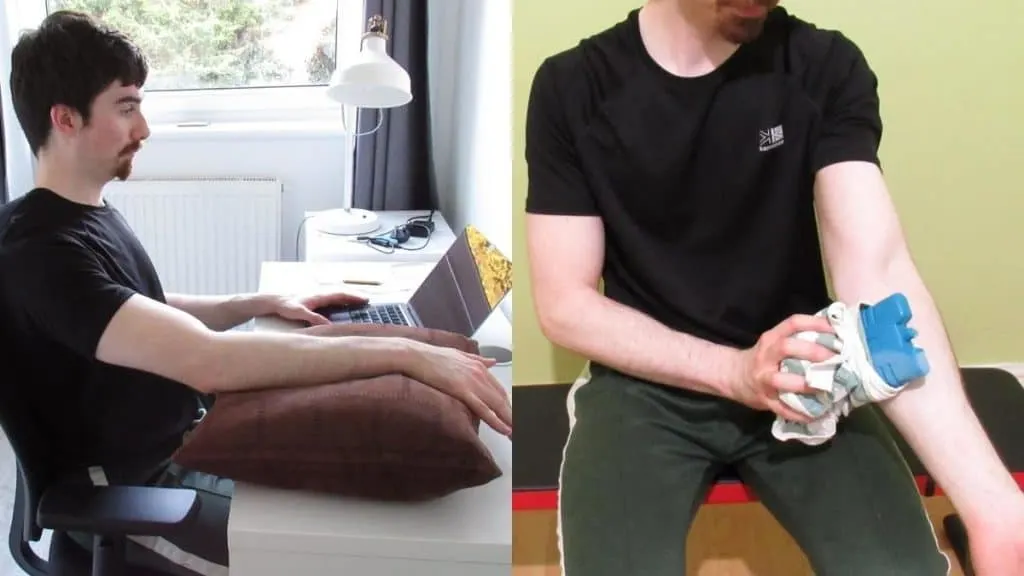
It’s important to distinguish between a forearm splints cure and future prevention. While preventing a reoccurrence of the initial injury involves learning how to stretch your forearm and techniques such as forearm myofascial release, recovery from the injury itself involves Rest, Ice, Compression, and Elevation.
So, before performing any forearm rehab exercises, you need to understand the proper forearm splints treatment protocols. Be sure to rest the affected limb as much as possible. Avoid any activity that requires you to lift with your arm, and try to limit tasks (like scrolling on your phone) that work the small forearm muscles (many of these muscles insert into the hand).
You can also buy a wrist and forearm splint brace to lock your limb in place. This is particularly useful if you often run on autopilot because it’ll restrict the movement in your forearm and help it to heal quicker because you won’t accidentally use it for tasks that you shouldn’t.
Also, ice the affected area to reduce any swelling and tenderness. Ideally, you’ll do this 1-2 times an hour. It’s especially useful to ice the pain point during the acute phase of the injury where the swelling will likely be at its peak.
Wearing a medical bandage around the painful area is another good recovery method. This is called compression, and it speeds up muscle recovery by promoting blood flow to damaged connective tissue. The trick is to get the tightness just right. Of course, you want some noticeable compression. Yet, you don’t want to wrap the bandage so tightly that it painfully restricts your blood flow.
Finally, keep your forearm elevated if you can. If you’re sitting on the sofa, for example, place your arm on the armrest rather than on your lap. You don’t need to exaggerate it, but some elevation will almost certainly help the recovery (by reducing swelling) if you also rest the injured limb.
Now that you know how to treat forearm splints (presuming that the injury isn’t in need of further medical attention), the time is right to learn about methods of prevention so that you can avoid getting this injury again in the future.
Read more: brachioradialis pain after lifting │forearm pain from fibromyalgia
Forearm splint prevention
While working out can often be a cause of forearm splints [1] (it’s very possible to get forearm splints from lifting with poor form), controlled stretching and resistance training is also a great preventative measure against future forearm splint injuries.
Strength training
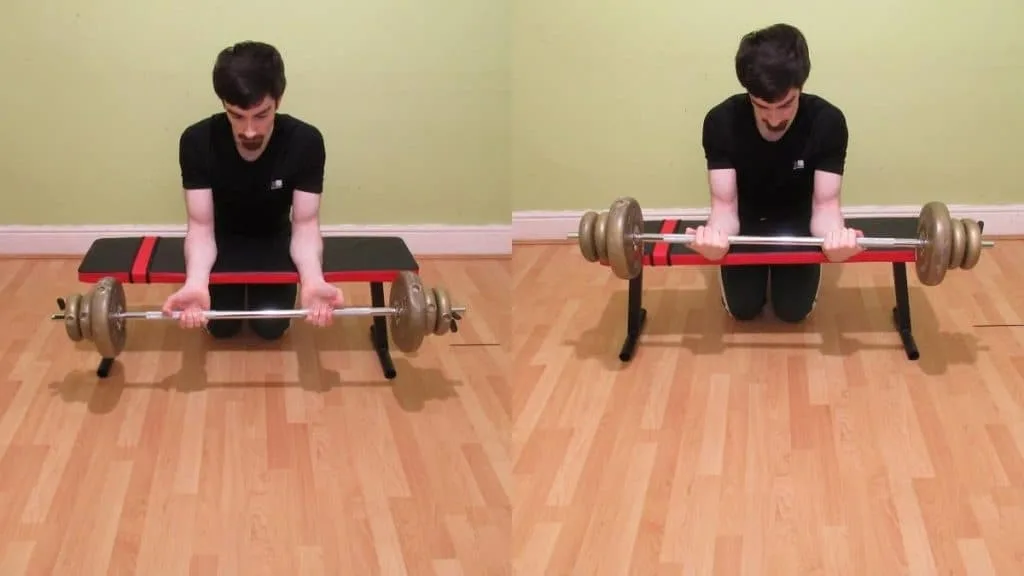
Lifting weights helps to make your forearms more injury resistant because they get used to handling tension. Just be sure to keep your training volume (i.e., the number of sets) reasonable. Otherwise, you could potentially provoke a reoccurrence rather than rehabilitation.
The wrist flexion with a dumbbell is a great rehab exercise.
Essentially, you hold a dumbbell and then rest the top of your forearm on a flat surface like a weight bench, desk, or table. From there, let your hand hang off the edge of the surface. Then, bend your wrist by lowering the weight towards the ground and descend until you feel a nice forearm stretch. Come back up by flexing your wrist, and aim to bring the weight slightly higher than where your hand and forearm are level.
Just don’t hold the dumbbell too tightly if you have pain in your wrist and forearm when gripping as such discomfort could be a sign of a different problem.
You can also do a wrist extension exercise. This is exactly the same as the wrist flexion but in reverse. So instead of resting the top of your forearm on the surface, you’re resting the underside of your forearm on the bench/table. From there, you lower the weight and then curl it back up by extending your wrist.
Do around 2-3 sets of 10-15 reps on both exercises, and be sure to start light. When you use good form rather than just lift heavy weights, you can actually get great results from surprisingly little resistance. It’s also a great drill if you have forearm pain from pull ups or other compound movements because it really isolates the muscles that back exercises don’t.
Stretching

If you’ve had shin splints in your forearms, then stretching is a great way to remove the toxins and lactic acid from your muscles. Likewise, stretching is one of the best ways to relieve tight forearm muscles after your strength training.
Let’s start with the flexors. Stand up and place your arms out in front of you with your elbows fully locked out. From there, raise one palm up as if you were waving to someone. Then, gently pull that palm towards you with your other hand until you feel a nice stretch in the underside of your forearm (the flexors).
To work the extensors, we’ll once again do the drill in reverse. Rather than raise your palm up, move your palm down so that your knuckles are facing away from you. Then, with your other hand, gently pull the fingers of your “working hand” towards your body until you feel a nice stretch in the top of your forearm (the extensors).
Make sure to repeat these stretches and exercises with your other arm, even if it’s not recovering from forearm splints. This way, you won’t develop any muscle imbalances.
Read more: forearm pain when typing │forearm pain because of gaming
Conclusion: Treating and preventing forearm splints
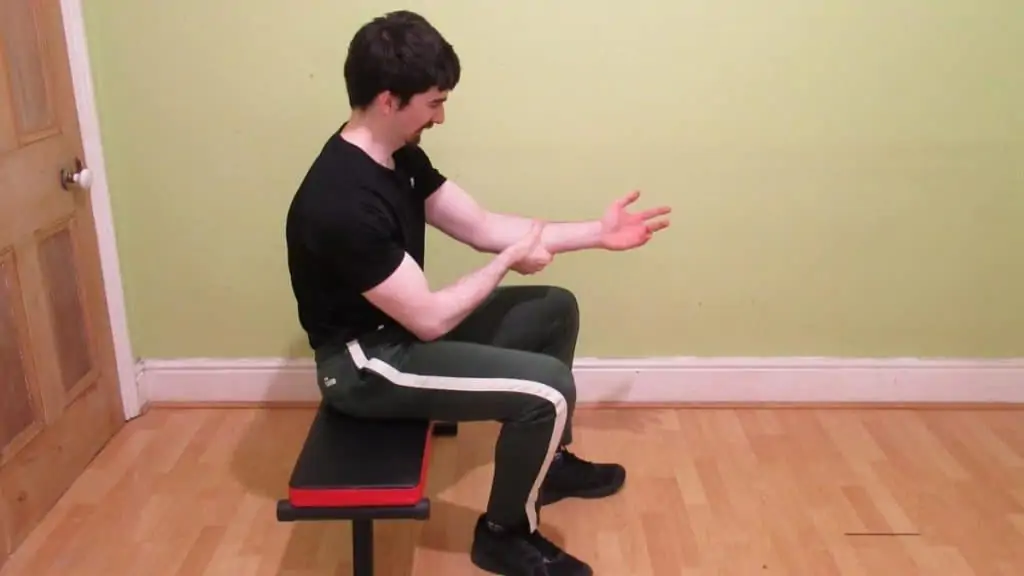
I healed my forearm splints through rest. And then, once I’d recovered, I lowered the weights during my workouts and started using better form. If your forearm splints aren’t causing severe pain, then you can most likely recover at home. But other recovery methods, such as wearing what’s also called a splint, can help in more severe cases. [2]
However, if you’re unsure about the cause of your pain or if your symptoms are particularly severe, then it’s always best to talk to a doctor so that you can be confident in your recovery.
References
- WADHWA, S. U. R. J. I. T. S., MANSBERG, R. O. B. E. R. T., FERNANDES, V. I. V. I. A. N. B., & QASIM, S. H. A. H. E. E. N. (1997). Forearm Splints Seen on Bone Scan in a Weightlifter. CLINICAL NUCLEAR MEDICINE, 22(10), 711–712. https://doi.org/10.1097/00003072-199710000-00014
- Najafi, M., Arazpour, M., Aminian, G., Curran, S., Madani, S. P., & Hutchins, S. W. (2015). Effect of a new hand-forearm splint on grip strength, pain, and function in patients with tennis elbow. Prosthetics and Orthotics International, 40(3), 363–368. https://doi.org/10.1177/0309364615592694
- What Is the RICE Method for Injuries? (2017, May 23). WebMD. https://www.webmd.com/first-aid/rice-method-injuries

